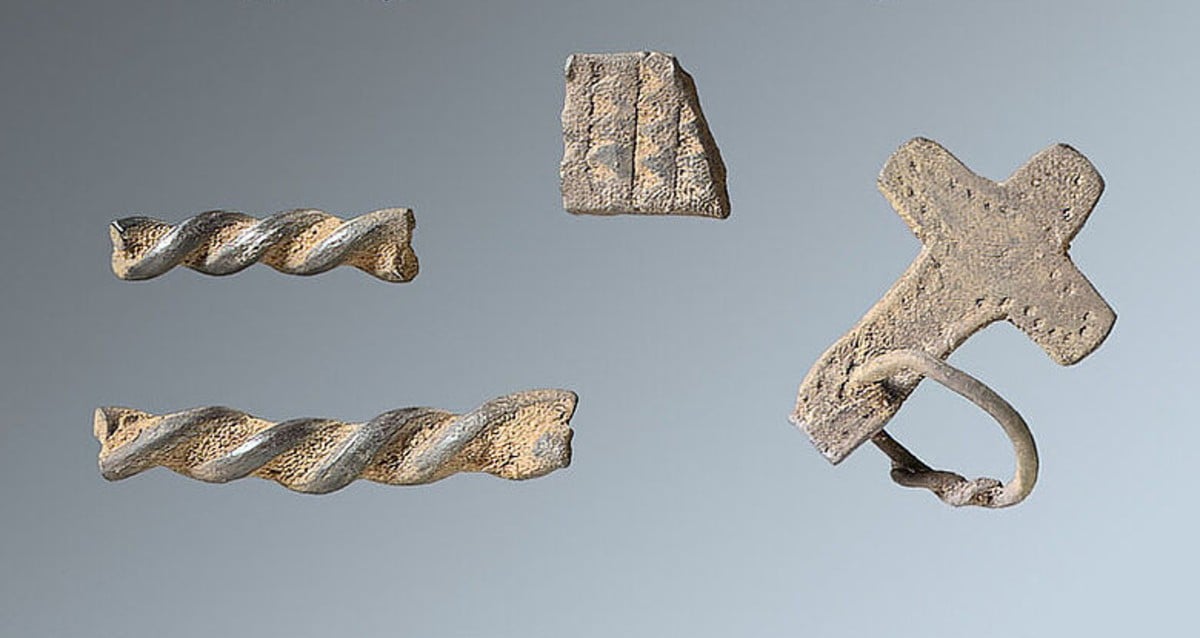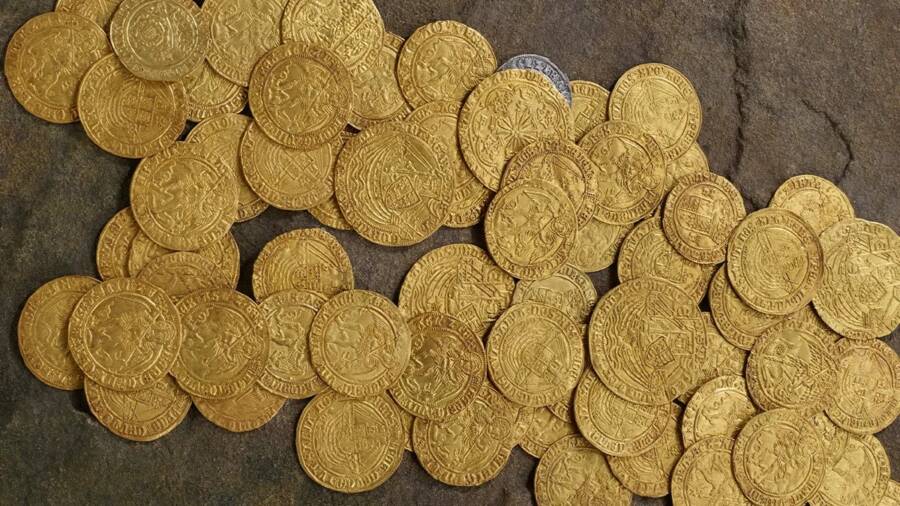Unbelievable Viking Hoard Discovered on German Riverbank—Ancient Secrets Unearthed by Amateur Detectorist!
Imagine stumbling upon a treasure chest not just filled with glittering coins and shiny trinkets, but wrapped in a thousand-year-old mystery! That’s exactly what happened when Arjen Spießwinkel, a keen-eyed metal detector enthusiast, unearthed a Viking hoard near Germany’s Schlei River. Buried in the 10th century, this stash isn’t your typical pirate booty; among its 200 objects lies a puzzling pendant—could it be an early Christian cross or an unfinished Thor’s hammer? Talk about a divine identity crisis! This find throws open a window into a time when Viking warriors might have been juggling Norse gods and emerging Christian beliefs—like trying to decide between a sword and a Bible for your bedside table. Dive into the fascinating blend of faith, folklore, and fortune in Haithabu, a bustling Viking hub where trade routes and legends crossed paths. Curious to unravel more about this enigmatic hoard and the tales it holds? <a href="https://www.archaeologie-online.de/index.php?id=8&L=1&txnewspi1%5Bnews%5D=6296&txnewspi1%5Bcontroller%5D=News&txnewspi1%5Baction%5D=detail&cHash=034695203019d493befe5371bbfc2c03″ target=”_blank”>LEARN MORE
The hoard dates back to the 10th century and includes one object that could be an early cross or an unfinished Thor’s hammer.
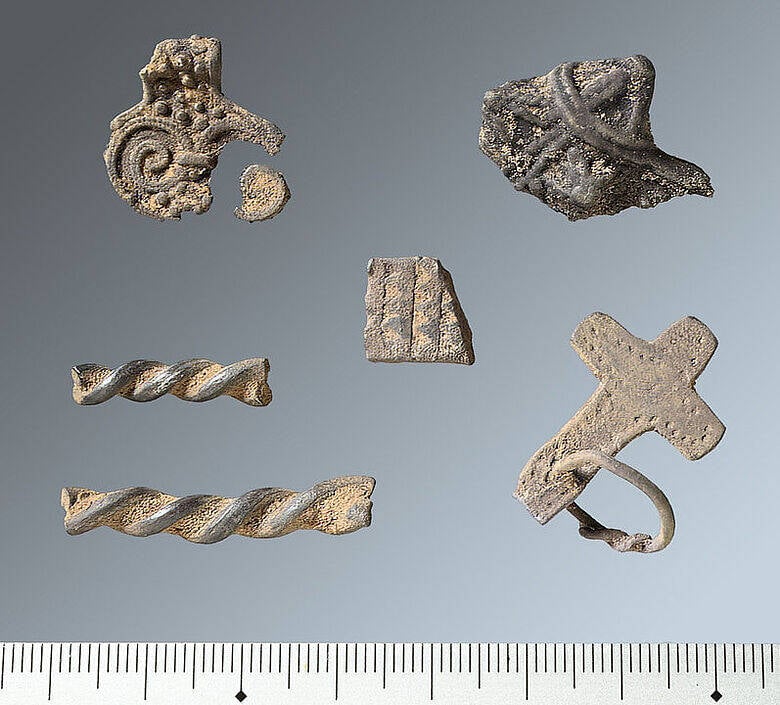
Schleswig-Holstein State Archaeological OfficeSome of the treasures found in the Viking hoard in Germany.
Arjen Spießwinkel is no stranger to finding treasure. A member of a volunteer metal detector group in Schleswig-Holstein, Germany, Spießwinkel has found amazing historical objects before. Most recently, he stumbled upon a hoard of centuries-old Viking treasure near Germany’s Schlei River.
Seemingly buried in the 10th century, the hoard contains a number of fascinating objects, including coins, a whetstone, and a curious pendant that could be an early cross — or perhaps Thor’s hammer.
The Viking Hoard Near The Schlei River
According to Archaeologie Online, the Viking hoard was detected by Arjen Spießwinkel, a certified metal detectorist, along the banks of the Schlei River near Haithabu, Germany. Spießwinkel immediately notified the Schleswig-Holstein State Archaeological Office (ALSH), who came to examine the scene.
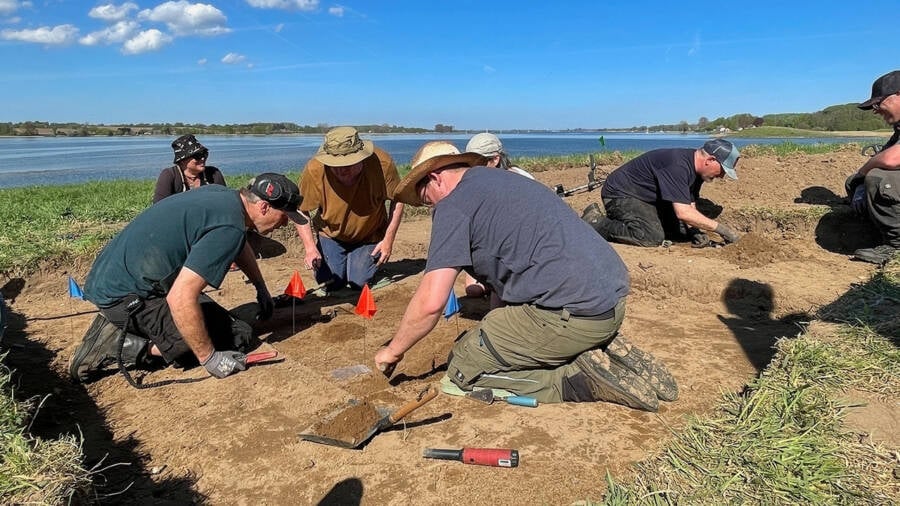
Schleswig-Holstein State Archaeological OfficeArchaeologists excavating the Viking hoard on the banks of the Schlei River.
The archaeologists found a wealth of treasure along the riverbank, including some 200 objects that date back to the 10th century. Experts suspect that they were buried at the river’s edge deliberately, either because someone wanted to hide them or because they were left as an offering.
Most of the objects are made of silver and include hacksilver, fragments of Arab coins known as dirhams, pieces of ingots, and jewelry. Archaeologists also found a piece of ceramic and a whetstone, which could hint at the existence of a previously unknown 10th-century settlement.
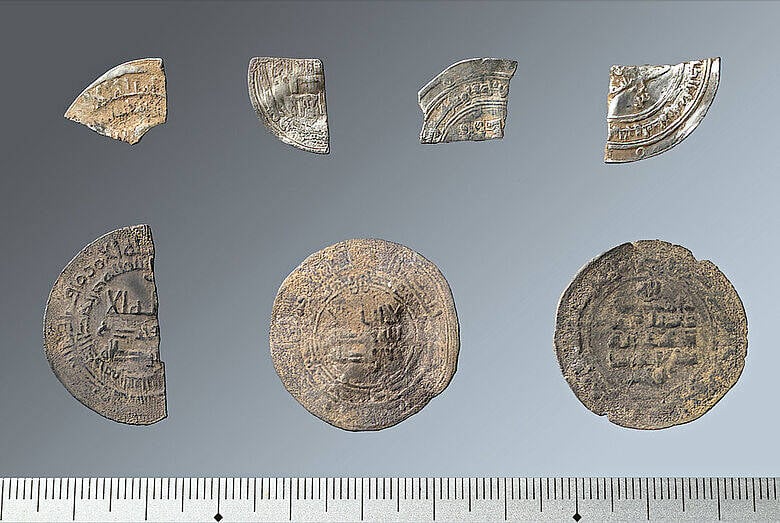
Schleswig-Holstein State Archaeological OfficeArchaeologists found 200 objects during their excavation, including a number of coins.
One of the most intriguing finds in the hoard was a filigree cross pendant. The cross could be an early artifact from the Christianization of the region, though it’s also possible that the pendant is an unfinished Thor’s hammer, a sign that local people were still worshipping Norse gods.
The pendant might have been worn as protection. In Norse mythology, the god Thor used his hammer, Mjölnir, to protect Asgard, the home of the gods. A similar object was found in 2022 in Sweden.
Whether the pendant is a cross, a hammer, or something else entirely, it stands as an exciting reminder of the region’s long Viking history.
The Viking History Of Haithabu
Centuries ago, Haithabu was an important hub of Viking activity. According to the Haithabu Viking Museum, the town was likely first founded by Frisian merchants during the eighth century. Then, the Vikings moved in.
Advantageously placed alongside the Baltic Sea estuary, Haithabu became a key Viking trading hub between the ninth and 11th centuries. A crossroads for several important trade routes, Haithabu drew people from around the world, including Arab chronologer Ibrahim ibn Ahmed At-Tartûschi, who described Haithabu, one of the first large cities in northern Europe, as a “very large town at the outermost end of the ocean.”
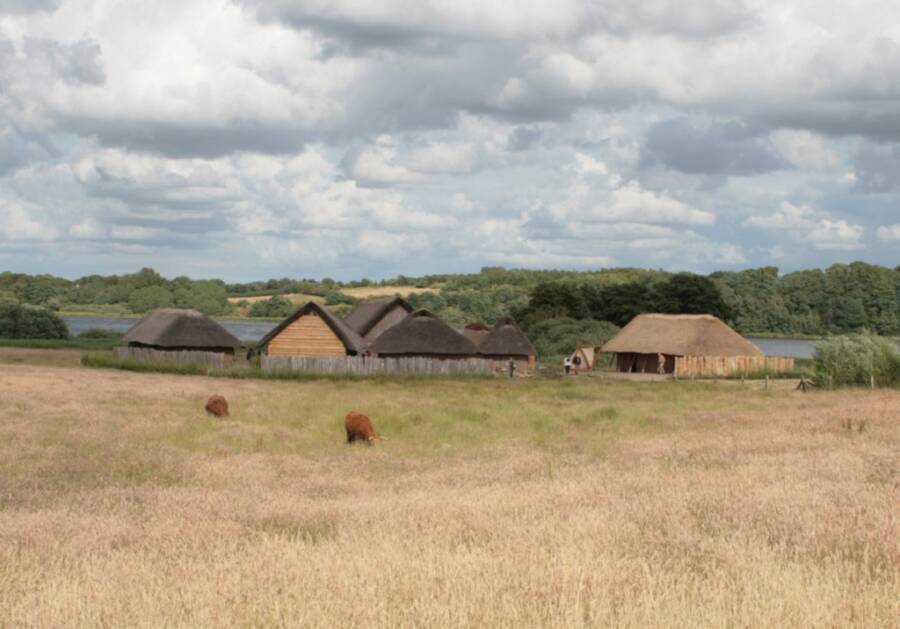
Kai-Erik Ballak/Wikimedia CommonsReconstructed Viking houses near the Haithabu Viking Museum in Haithabu.
Christianity began to spread in Haithabu in the ninth century, when St. Ansgar — known as the “Apostle of the North” — traveled to the region. St. Ansgar sought to convert local populations in Northern Europe to Christianity, but it would take centuries for the religion to take root.
As such, the discovery of the Viking-era objects on the banks of the Schlei River are part of a long and fascinating history. Not only do they hint at the presence of an unknown 10th-century settlement, but they include a pendant that may be an example of early Christianization.
